More than mere seasonings, Korea’s traditional fermented sauces — doenjang, ganjang, and gochujang — are vessels of memory, flavour, and philosophy.
BY JOCELYN TAN
Open any refrigerator in a Korean kitchen, and you’ll likely find jang.
It’s in the soy sauce that seasons your soup, the fermented soybean paste that deepens your stew, or the spicy-sweet gochujang that adds a kick to your bibimbap. Jang isn’t just a condiment — it’s a lifeline of Korean cooking. So foundational is jang to the Korean kitchen that it often goes unspoken, its presence assumed. But behind its quiet ubiquity is a slow, layered process — and a story of survival.
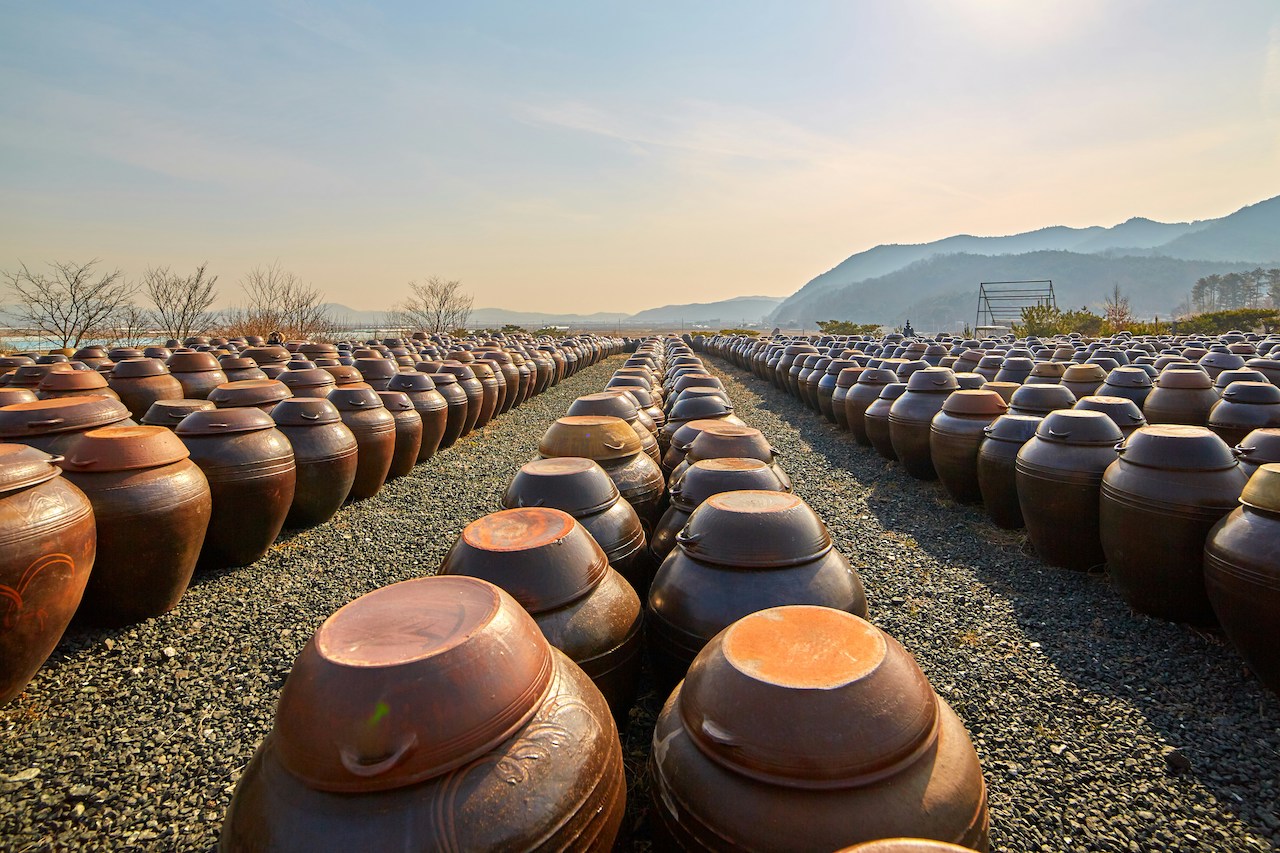
For much of Korea’s agrarian past, meat was scarce and dairy virtually nonexistent. Up until just a few generations ago, jang was more than flavour — it was function. With little access to animal protein, Koreans turned to jang as a vital nutritional anchor. Made from nothing more than soybeans, water, and salt, it became a protein-rich, vitamin-packed staple that sustained families through long winters and lean years.
Its enduring presence in Korean food isn’t just a testament to taste, but to resilience. Jang transforms simple ingredients into something nourishing, complex, and versatile. Necessity became tradition. Tradition became flavour. And today, jang continues to shape the table. Jang has aroma: earthy, salty, and deep. It has texture — sometimes smooth, sometimes coarse, sometimes syrupy. A single spoonful of doenjang can bring a pot of vegetables to life. A few drops of ganjang can pull a dish together. Gochujang can both awaken a palate and soothe a craving. But jang is more than seasoning. It’s memory, land, care, and time.
Main players
There are three foundational types of jang: doenjang (fermented soybean paste), ganjang (soy sauce), and gochujang (red chilli paste). Doenjang and ganjang begin at the same starting point: meju. Meju is made by boiling soybeans, mashing them, shaping them into bricks, and then fermenting them with wild microbes — often by hanging them with rice straw through winter. This first fermentation can last weeks. Once the meju blocks are dried and ready, they’re submerged in brine inside porous onggi jars, which breathe through microscopic pores and allow air circulation.
As time passes, the meju infuses the brine. Eventually, the liquid is drained and becomes ganjang, while the solids are mashed and aged into doenjang. This is what makes Korean jang unique — it is twice-fermented, a process that creates incredible depth of flavour. Gochujang, on the other hand, is usually made from meju powder, glutinous rice, red chilli powder, and rice syrup. It is not separated into liquid and solids like the others, but ferments as a cohesive paste, resulting in a thick, spicy-sweet umami bomb used in everything from stews to sauces.
“Meju is the foundation,” says Master Ki Soon-do, a traditional jang maker and the 10th-generation daughter-in-law of the Yangjinjae head house, which boasts a 370-year-old jang-making lineage. “But it’s not just about flavour. It’s about respect — for nature, for process, for what came before.”
Master Ki has been making jang for 53 years, overseeing over 1,200 onggi jars in her Damyang fermentation yard. In 2008, she was designated Korea’s 35th Traditional Food Master. Her process is deeply tied to Korea’s seasonal rhythms. Meju is made in the cold, dry winter months — between the 11th and 12th lunar months — because harmful bacteria are less active. Jang is then created in early spring and separated into doenjang and ganjang around April or May. “Even the days we choose to make jang are important,” she explains. “We select auspicious days and begin the process with reverence.”

Fermentation continues through the summer as heat activates microbial activity, while the jars’ clay walls regulate internal temperatures. In autumn, jang settles into maturity. “Time is the ingredient you can’t fake,” says Master Ki. “People think fermentation takes too long, but that’s what makes it precious.”
Good jang begins with good meju, which requires not just soybeans, but clean air, fresh water, and a carefully managed drying environment. According to Ki, poorly ventilated or over-humid conditions can spoil the meju. “A well-fermented meju smells like sun-dried straw,” she says. And while many households used to make their own jang, she notes that today, most people buy mass-produced versions, often unaware of how deeply different they are from handmade jang.
Traditional jang is made slowly, using wild fermentation, over months or years. Mass-market jang, on the other hand, is often hydrolysed soy protein that’s flavoured with additives and aged in steel vats for just weeks. “Jang is a culture, not just a technique,” Ki insists. “It holds emotion, intention, and time.”
Modern reinterpretations
If Master Ki represents jang’s past and continuity, Chef Mingoo Kang of three-Michelin-starred Mingles represents its evolution. For the chef, jang is the starting point of any conversation about Korean cuisine. “I grew up eating it daily, like all Koreans,” he says. “But it wasn’t until I opened Mingles and started exploring Korean food more deeply that I realised that despite having eaten it all my life, I didn’t fully understand jang.”
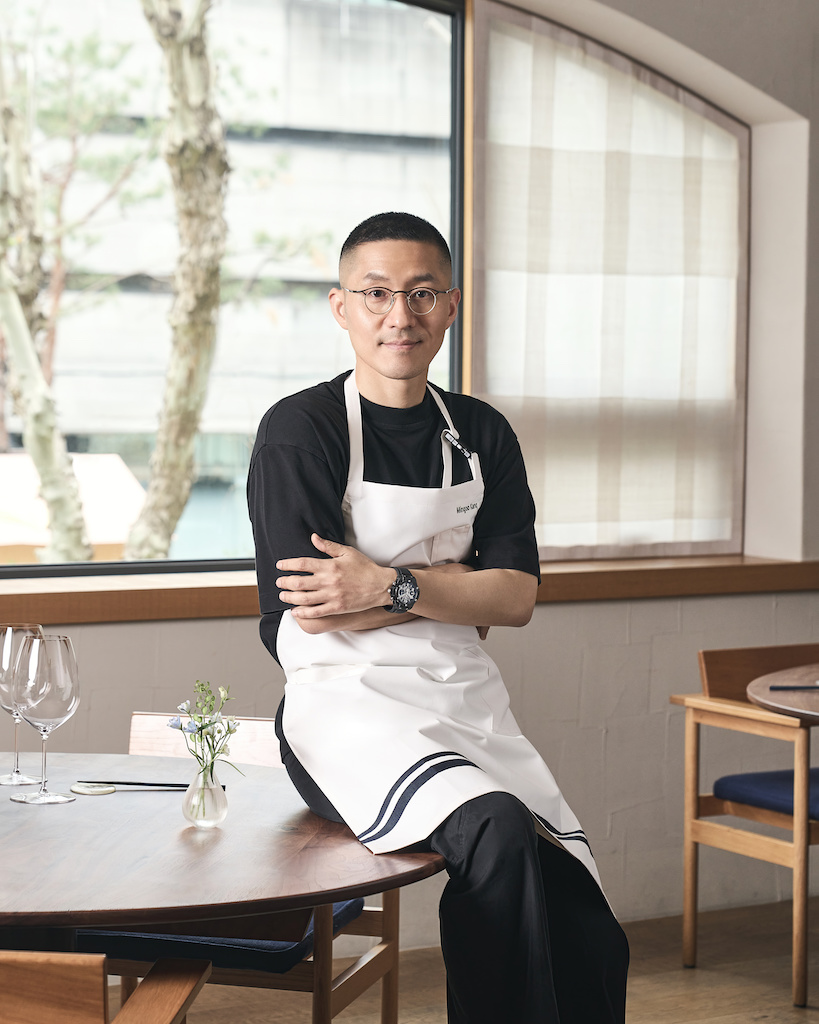
Meeting figures like Chef Cho Hee-sook and Monk Jeong Kwan changed that. From them, Kang learned that the choice of jang — its type, age, and flavour profile — is central to Korean cooking. It determines the dish’s character. Since then, he has explored jang not just in traditional Korean food but across Western cuisine, modern techniques, and even desserts.
At Mingles, jang appears most uniquely in his signature dish, the Jang Trio. Think a doenjang-flavoured crème brûlée, soy sauce-flavoured caramelised pecans, and a playful, crunchy texture with gochujang-flavoured rice puff that’s topped with a scoop of creamy vanilla ice cream and whiskey foam. A symphony of sweet, savoury, spicy, and rich flavours that showcases the versatility of jang.
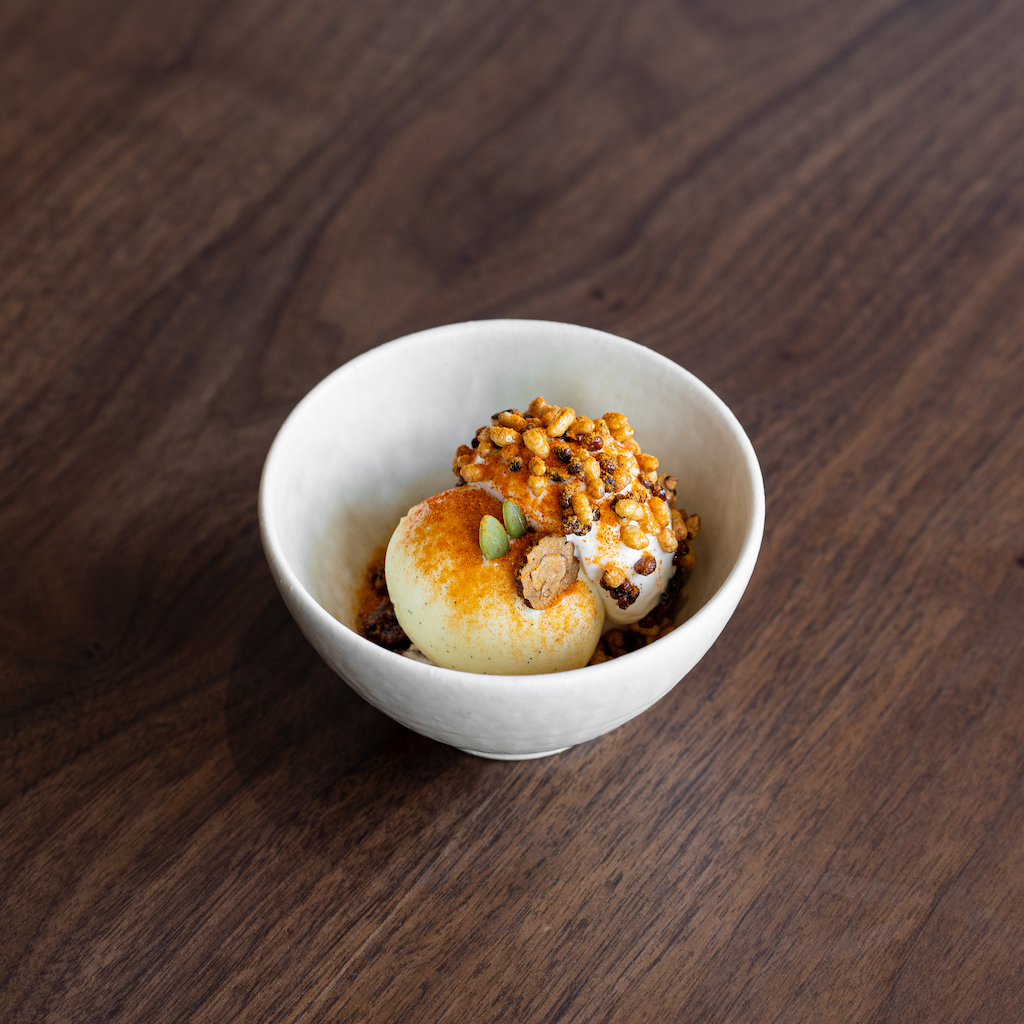
Chef Kang believes jang has a place in global cuisine, but he’s cautious about misrepresentation. “People often assume Korean ganjang is just soy sauce, or that doenjang is Korean miso. But jang is different — it has a different origin and a different purpose. Korean food needs Korean jang.” That’s part of why he wrote Jang: The Soul of Korean Cooking, a recipe book dedicated to these condiments, published in English before Korean. “I wanted to introduce Korean food culture properly to the world.”
In the book, he includes approachable recipes like soy sauce ragu — used in bibimbap, bulgogi pizza, or pasta — to show that jang isn’t exotic or obscure. It can live comfortably in a modern, international kitchen. “I want jang to become a familiar, everyday ingredient around the world,” he shares.
The future of jang
Despite modernisation, jang remains a vital part of Korea’s food identity — and increasingly, a point of pride and preservation. In 2024, jang-making culture was officially listed as a UNESCO Intangible Cultural Heritage of Humanity. Master Ki’s fermentation school now welcomes chefs from around the world. So far, over 35 chefs from 15 countries have trained under her, learning not just techniques but the philosophy of jang.
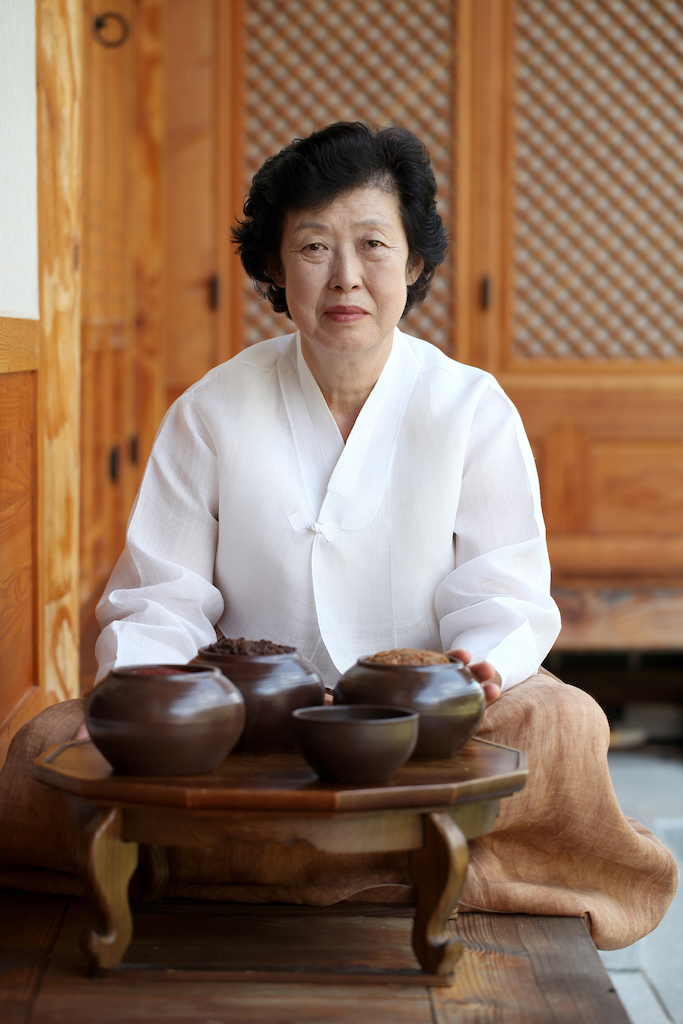
She’s also collaborated with Korean fine- dining restaurants and chefs to bring jang into contemporary dining spaces. At events like “Jangko” with Chef Joseph Lidgerwood of two-Michelin-starred EVETT or the “Heritage of Artisan” series with Chef Kang Min-Chul, jang appears in refined dishes, plated like art and paired with wine.
Yet for both Master Ki and Chef Kang, jang remains deeply personal. “It’s in the vegetable side dishes my grandmother made,” says Kang. “Simple namul seasoned with Jang — blanched, raw, or stir-fried. Since these dishes are so simple, jang plays a central role in flavour.” For Ki, it is family, memory, and philosophy: “Jang holds the wisdom of our ancestors. It is nature, time, care, and spirit — all contained in one jar.”
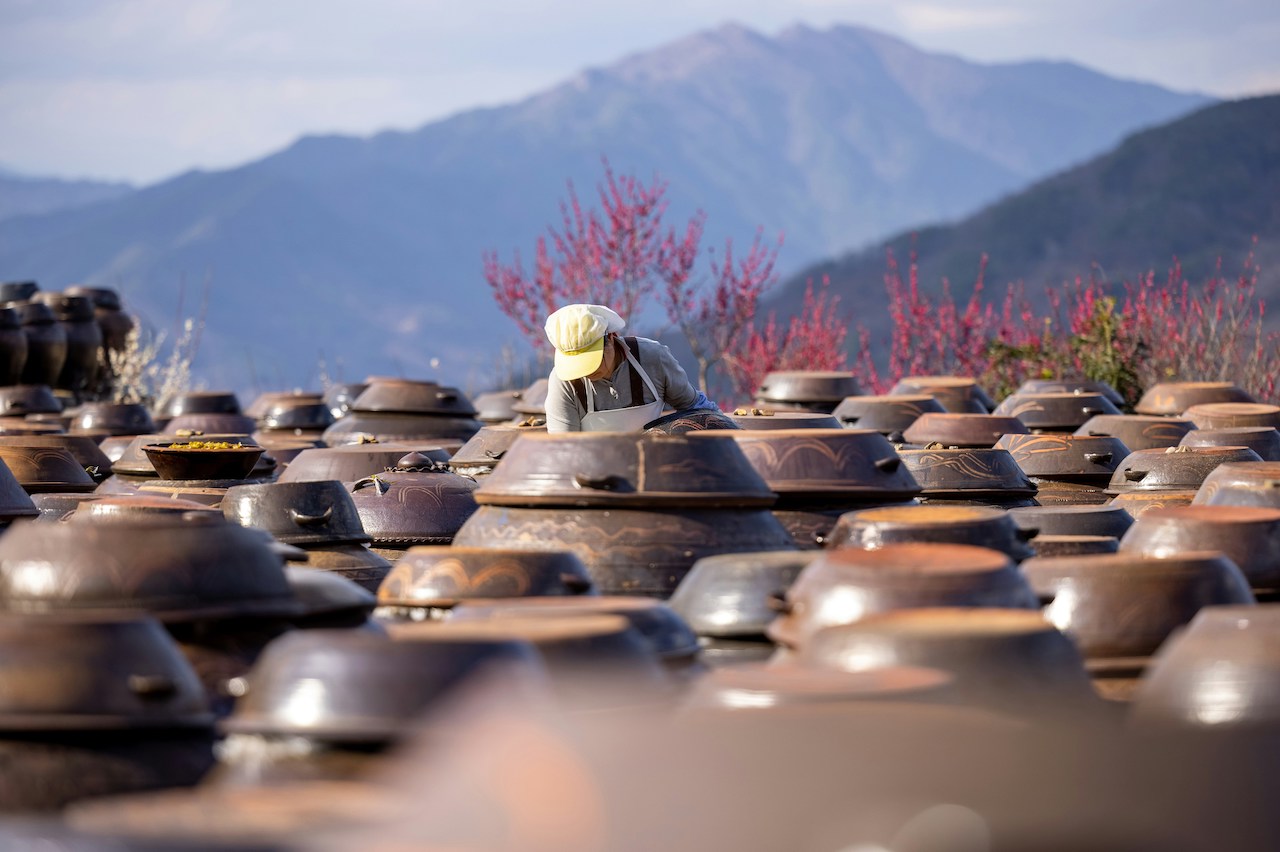
On a cold winter morning in Damyang, the courtyard behind Master Ki Soon-do’s house is lined with rows of clay jars, their contents undisturbed, ageing slowly beneath the sun. Inside each vessel, a flavour is forming — one that speaks of family, patience, and a past carefully tended for the future. Whether served in a temple bowl or a Michelin-starred tasting menu, jang continues to tell the story of Korea. And it is still taking its time.
